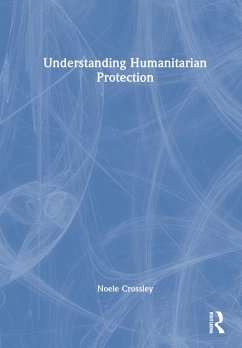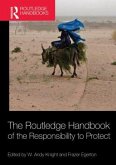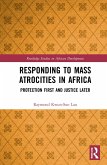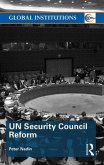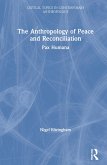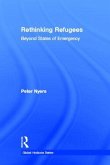This new textbook provides an introduction to humanitarian protection, a field of study concerned with international responses to armed conflict, political violence, and humanitarian crisis. The book engages with a wide range of empirical and normative questions, providing an overview of the academic literature whilst simultaneously discussing the policies and practices associated with protective responses to conflict and humanitarian emergencies that put the lives and livelihoods of vulnerable populations, including civilians, refugees, and minority groups, at risk. Divided into three parts, covering the origins of the humanitarian protection regime, the range of actors involved, and the responsibilities of these actors, the book offers an accessible entry point into the major contemporary debates, providing readers with the conceptual tools for understanding core issues. Key points are reinforced and illustrated through the deployment of selected case studies, and a comprehensive glossary is provided for key terms. Each chapter ends with a summary of key points, questions for further reflection, and a list of recommended reading. This book will be of much interest to students of human protection, humanitarianism, the Responsibility to Protect, human security, peacekeeping, and International Relations in general.
Hinweis: Dieser Artikel kann nur an eine deutsche Lieferadresse ausgeliefert werden.
Hinweis: Dieser Artikel kann nur an eine deutsche Lieferadresse ausgeliefert werden.
'Understanding Human Protection is an expertly written, systematic introduction to the history, institutions and practices relating to humanitarian protection and intervention. Filled with illustrations based on pertinent case-studies, and written in a clear and highly accessible manner, it is a valuable resource for teachers and students to grasp the breadth of the field, and key debates in one concise volume.'--Cecilia Jacob, The Australian National University
'Crossley provides a fantastic introduction to the humanitarian protection regime. From R2P to UN reform, humanitarian relief to targeted sanctions, Understanding Humanitarian Protection offers a sharp, highly informative, and accessible account of the development of the regime, its key issues, and major controversies.'--James Pattison, University of Manchester, UK
'How to protect civilians from war and other man-made crises is one of the key practical and intellectual challenges of our time. Noele Crossley's book provides a useful survey of how different traditions of thought and a wide range of external governments, international organisations, and civil society have tried to meet this challenge. Her conclusion suggests better informed citizens, governments and organisations should build a global regime that eliminates protection "black holes" -- territories where third parties cannot alleviate terrible suffering.'--Paul D. Williams, George Washington University, USA
'Noele Crossley's Understanding Humanitarian Protection provides a comprehensive and thoughtful introduction to a range of themes related to conflict prevention, response, and management. The book is very well structured, as it moves through the history of humanitarian protection, then discusses key state and international actors in contemporary protection regimes, before systematically mapping different forms of intervention and crisis response. The analysis is neatly complemented by a wide range of case studies. The book would be an ideal addition to any undergraduate or post-graduate course on themes of peace and conflict.'--John Gledhill, University of Oxford, UK
'Crossley provides a fantastic introduction to the humanitarian protection regime. From R2P to UN reform, humanitarian relief to targeted sanctions, Understanding Humanitarian Protection offers a sharp, highly informative, and accessible account of the development of the regime, its key issues, and major controversies.'--James Pattison, University of Manchester, UK
'How to protect civilians from war and other man-made crises is one of the key practical and intellectual challenges of our time. Noele Crossley's book provides a useful survey of how different traditions of thought and a wide range of external governments, international organisations, and civil society have tried to meet this challenge. Her conclusion suggests better informed citizens, governments and organisations should build a global regime that eliminates protection "black holes" -- territories where third parties cannot alleviate terrible suffering.'--Paul D. Williams, George Washington University, USA
'Noele Crossley's Understanding Humanitarian Protection provides a comprehensive and thoughtful introduction to a range of themes related to conflict prevention, response, and management. The book is very well structured, as it moves through the history of humanitarian protection, then discusses key state and international actors in contemporary protection regimes, before systematically mapping different forms of intervention and crisis response. The analysis is neatly complemented by a wide range of case studies. The book would be an ideal addition to any undergraduate or post-graduate course on themes of peace and conflict.'--John Gledhill, University of Oxford, UK

